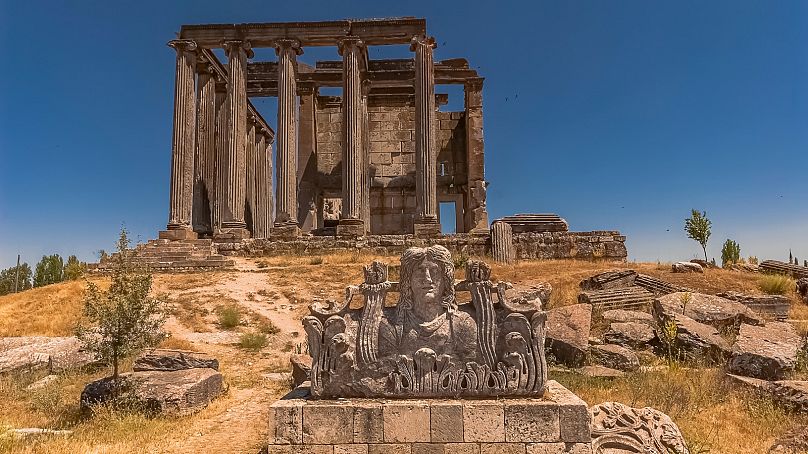Carved from limestone 5,000 years ago, archaeologists found the depiction of Aphrodite and Dionysus at the bottom of a creek bed.
At the bottom of a creek bed in the ancient city of Aizanoi, Turkey, archaeologists turned heads with the discovery of two ancient deities.
The statuary heads of both Aphrodite, the goddess of love, and Dionysus, the god of wine, were found at the site, which dates back 5,000 years, excavation coordinator Gokhan Coskun told Anadolu Agency.
"These are important findings for us, as they show that the polytheistic culture of ancient Greece existed for a long time without losing its importance in the Roman era," Coskun said.
Masterfully carved from limestone, the head of Aphrodite measures 19 inches tall and Dionysus' is 17 inches.
The statues’ bodies were found in a previous dig but it remains unclear how the heads were separated from them.
"The findings suggest that there may have been a sculpture workshop in the region," Coskun said.
The ancient city of Aizanoi
Modern Turkey is the site of many ancient Greek and Roman era settlements.
Aizanoi, in particular, has a history dating back 5,000 years and was included in the UNESCO World Heritage Tentative List in 2012.
Located in western Anatolia, Turkey, the ancient city is host to a wealth of historical artefacts, including one of the best-preserved temples, which was built for the Greek god Zeus.
Other notable features include two Turkish-style baths, a gymnasium, the sacred cave of Metre Steune and roman bridges, which are still in use today.












